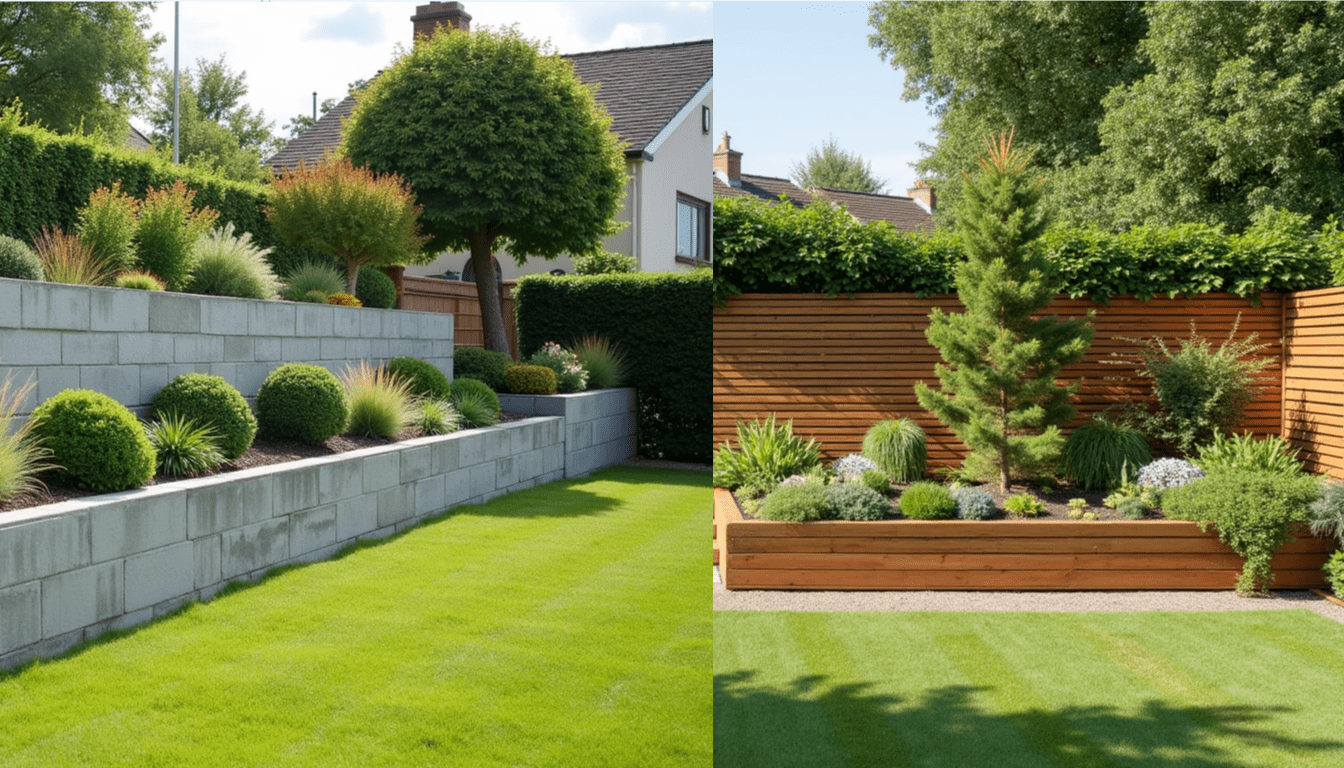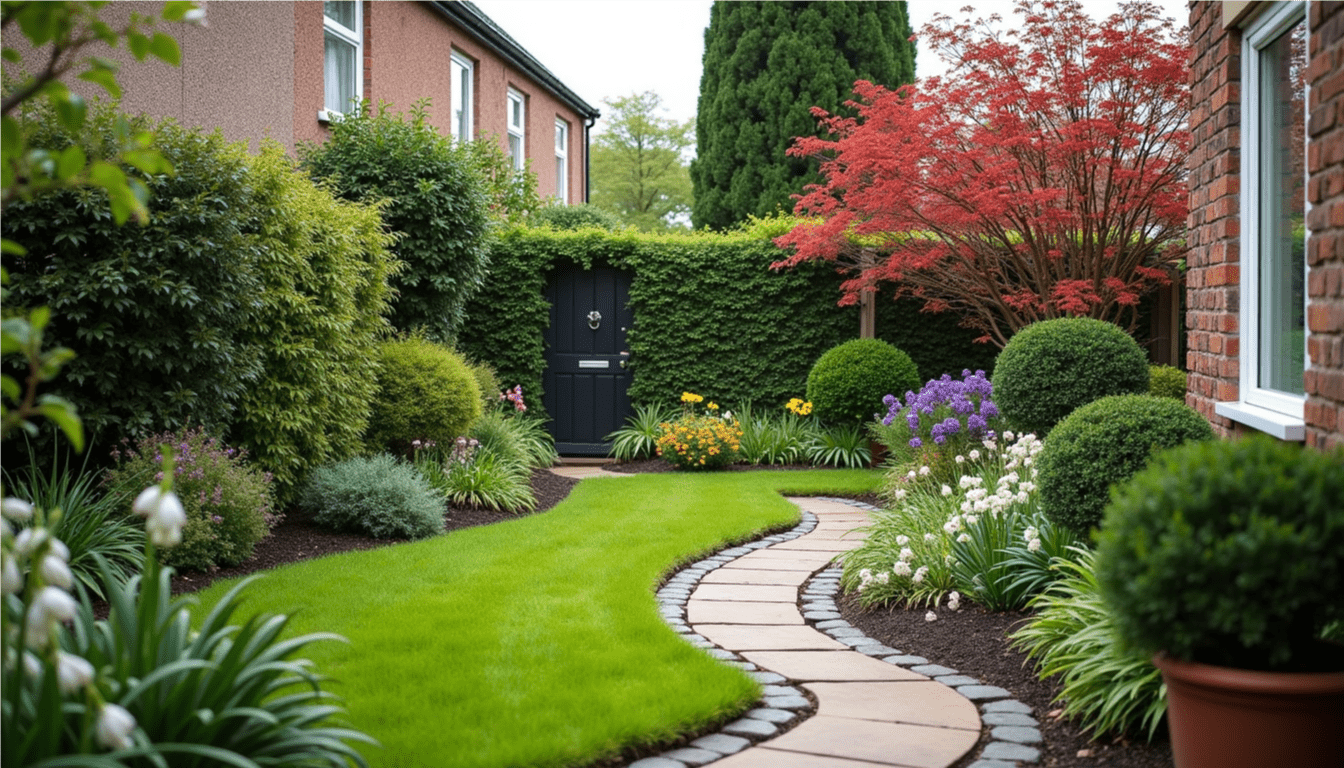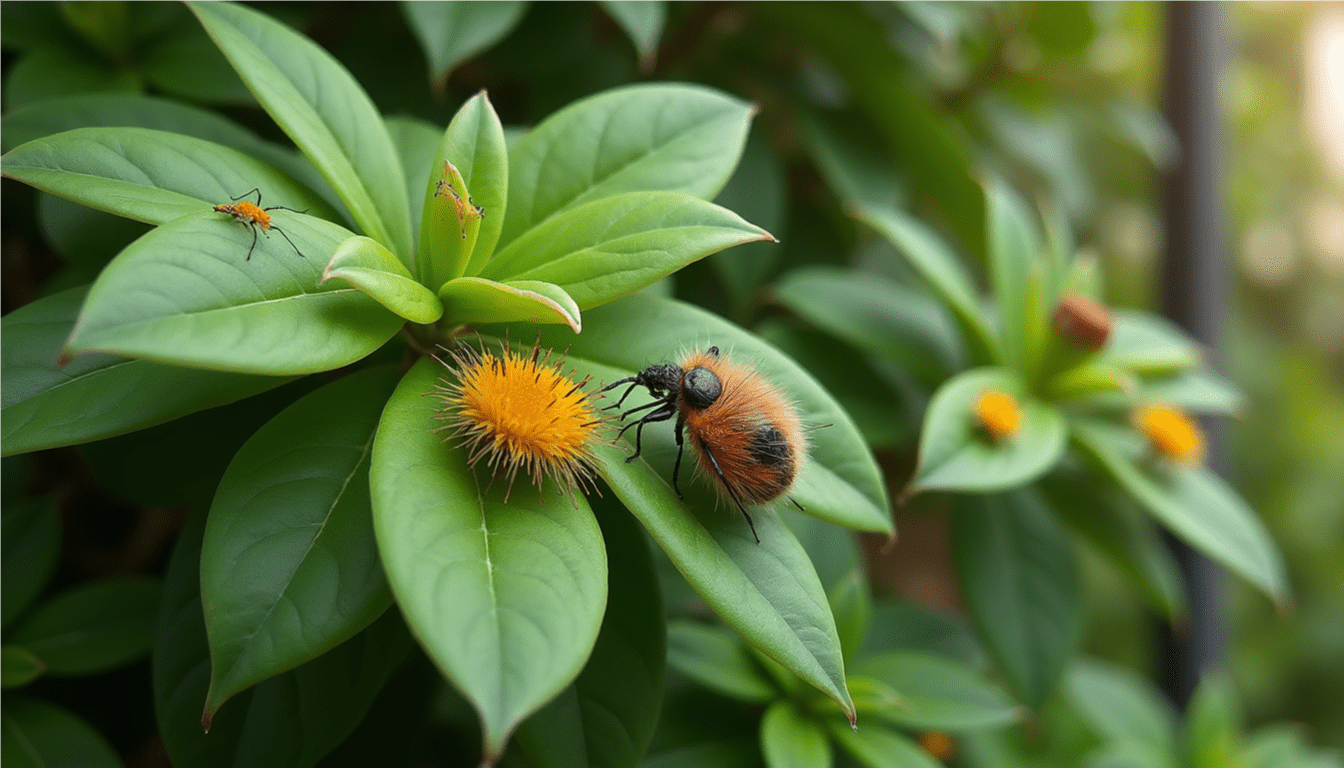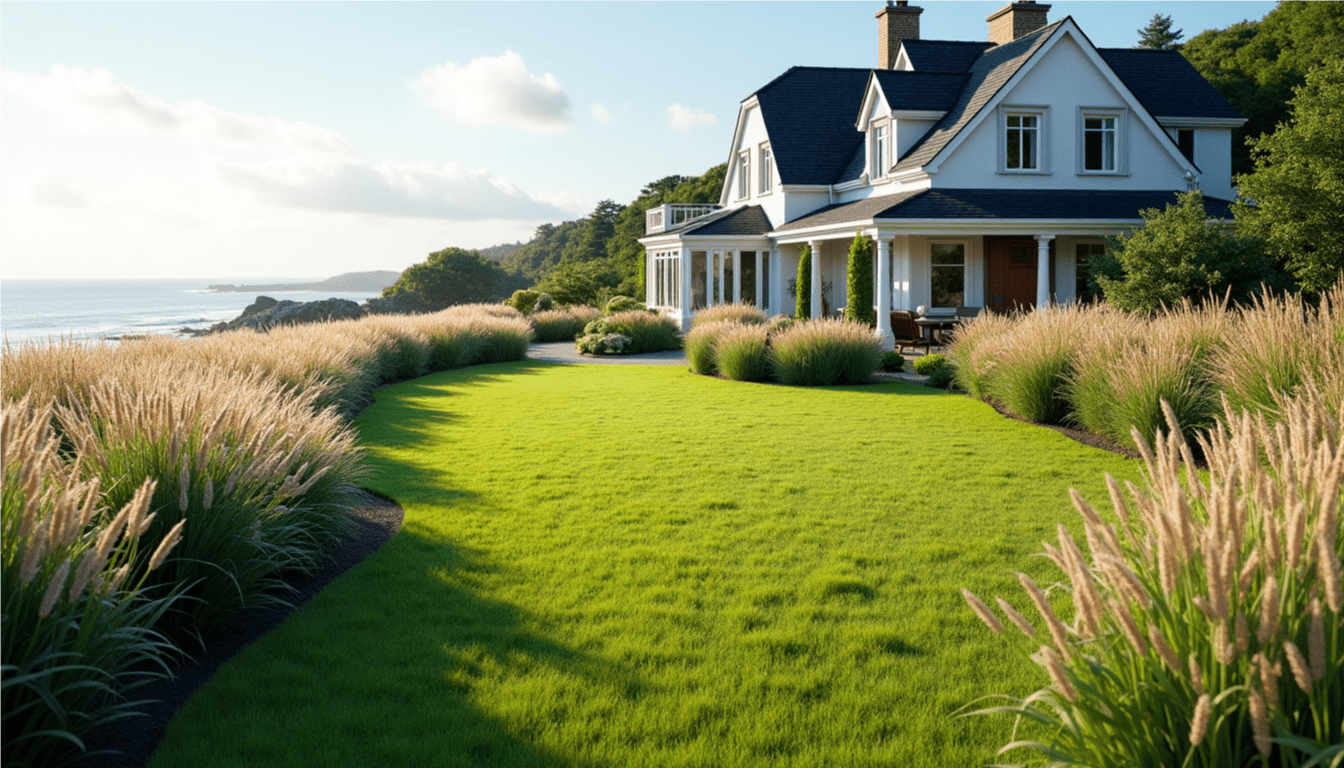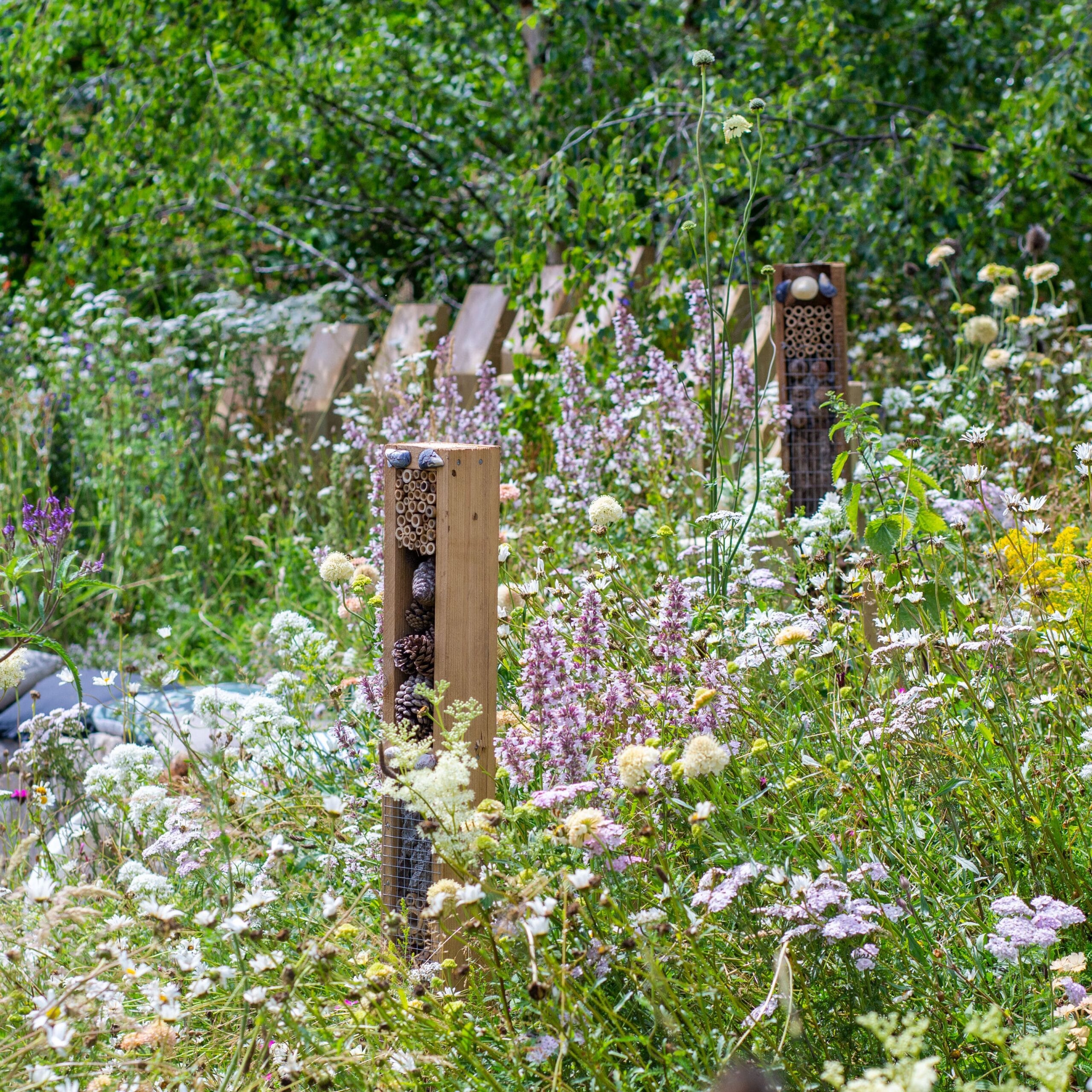
Key Takeaway
- Dublin’s maritime climate creates ideal conditions for a diverse range of plants that can provide year-round color and interest in your garden
- Evergreen structural plants like box topiary, bay trees, and Photinia ‘Red Robin’ form the backbone of successful Dublin gardens
- Strategic bulb planting with snowdrops, crocuses, and alliums creates sequential blooming from February through May
- Dublin Landscape Gardener specializes in creating gardens that thrive in local Irish conditions while providing multi-season interest
- Color coordination and careful plant selection are essential for creating harmony in garden borders, especially in smaller spaces
Dublin’s Unique Growing Conditions: Your Starting Point for Year-Round Blooms
Dublin’s maritime climate offers gardeners a unique opportunity to create stunning landscapes that provide interest throughout all four seasons. With mild, wet winters and cool, moist summers, Dublin gardens benefit from year-round precipitation—a blessing for plant growth that also presents challenges in terms of drainage. Understanding these local conditions is the foundation for creating a garden that thrives rather than merely survives.
The distinctive Irish climate allows for an impressive diversity of plants to flourish. South-facing gardens in Dublin receive the most sunlight, making them ideal for sun-loving specimens, while north-facing areas can accommodate shade-tolerant varieties. This microclimate versatility enables Dublin gardeners to incorporate a wide palette of plants for continuous seasonal interest.
Before selecting plants for year-round blooming, it’s essential to assess your garden’s specific conditions. The experts at Dublin Landscape Gardener recommend analyzing your soil type, drainage patterns, and sun exposure to create a garden perfectly adapted to local conditions. These factors will guide your plant choices and determine the success of your year-round garden display.
Book a Landscape Garden Consultation
A personal creative landscape garden designed to bring your vision to life!
Building the Backbone: Evergreen Structure Plants for Dublin Gardens
1. Box Topiary and Bay Trees: Low-Maintenance Focal Points
The secret to a garden that looks impressive throughout the year lies in its structural elements. Evergreen shrubs provide essential form and structure during winter months when deciduous plants have shed their leaves. Box topiary (Buxus sempervirens) offers versatility for creating defined shapes that serve as focal points regardless of season. These can be maintained with just two pruning sessions annually—ideally in late May and early September.
Bay trees (Laurus nobilis), especially when lollipop-pruned in containers, create elegant vertical accents that anchor garden designs. Their aromatic leaves add sensory appeal and can even be harvested for culinary use, bringing functionality alongside beauty.
2. Photinia ‘Red Robin’ and Other Colorful Evergreens
For gardens requiring year-round color, Photinia ‘Red Robin’ delivers impressive visual impact. This versatile shrub produces stunning bright red new growth that gradually matures to glossy green, creating a continuous color display even in winter months. Its standard trained form works particularly well in smaller Dublin gardens where space is at a premium.
Other colorful evergreens that perform reliably in Dublin’s climate include:
- Euonymus fortunei ‘Emerald ‘n’ Gold’ – with its bright variegated foliage
- Choisya ternata (Mexican orange blossom) – offering fragrant white flowers and glossy green leaves
- Pittosporum tenuifolium ‘Silver Queen’ – providing elegant silver-edged foliage year-round
3. Strategic Placement for Maximum Impact
When incorporating structural evergreens into Dublin gardens, position is everything. Place these permanent features thoughtfully to create a framework that supports seasonal planting. In smaller spaces, careful placement becomes even more critical—standard or upright forms maximize vertical interest while minimizing footprint.
For tiny front gardens, which are common throughout Dublin, consider using just two or three structural specimens as anchors, then supplement with seasonal bloomers. This approach creates a cohesive design that maintains interest throughout the year without overcrowding the space.
Spring Champions: Early Season Bloomers That Thrive in Irish Conditions
Bulbs That Perform Reliably in Dublin’s Climate
Spring begins in Dublin gardens with the emergence of bulbs, nature’s most punctual performers. These underground treasures provide the first pops of color after winter’s gray days and create a sequence of blooms that extends from late January through May. For Dublin gardens, bulb selection and planting strategy are particularly important given the moist conditions.
Snowdrops (Galanthus) are often the earliest harbingers of spring, sometimes emerging as early as January in Dublin’s mild climate. Their delicate white blooms are surprisingly resilient to the variable Irish weather. Following close behind are crocuses in purple, white, and yellow, creating carpets of color in February and early March.
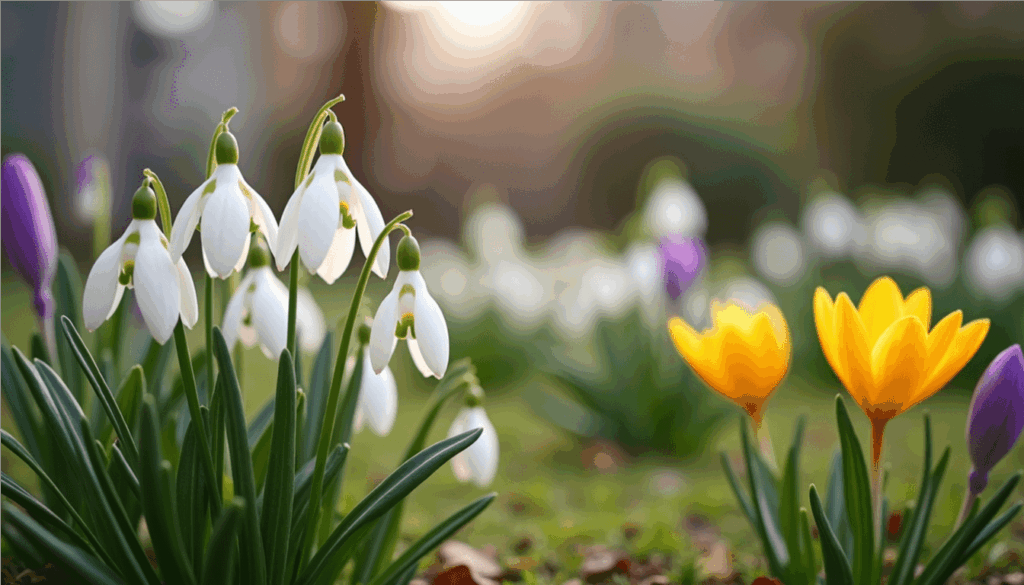
For reliable mid-spring impact, consider this sequence of bulbs that thrive in Dublin’s growing conditions:
Book a Landscape Garden Consultation
A personal creative landscape garden designed to bring your vision to life!
- Muscari (grape hyacinths) – creating pools of intense blue in March-April
- Narcissi – with varieties blooming from February through April
- Hyacinths – offering fragrance and bold colors in April
- Tulips – providing spectacular displays from April into May
- Alliums – extending the bulb season with their architectural seedheads lasting into summer
When planting bulbs in Dublin gardens, good drainage is essential. Add grit to heavy clay soils to prevent bulbs from rotting in the consistently moist conditions. Plant in generous drifts rather than single specimens for maximum impact, and consider layering different bulb types at varying depths for sequential blooming in the same space.
Early-Flowering Perennials for March-May Color
As spring bulbs begin to fade, early-flowering perennials take center stage in Dublin gardens. These plants appreciate the cool, moist conditions of Irish spring and provide essential color before summer perennials have fully developed.
Aquilegias (columbines) are perfect companions for spring bulbs in Dublin gardens. Their delicate, nodding flowers in shades of purple, pink, white, and blue thrive in the partial shade common in many Irish gardens. They self-seed gently, creating natural-looking drifts over time.
Pulmonaria (lungwort) is another early performer that appreciates Dublin’s moisture levels. Its spotted foliage provides interest even before the blue and pink flowers appear in early spring. For sunnier positions, Euphorbia polychroma creates mounds of acid-green flowers that complement the purples and whites of other spring bloomers.
Summer Stars: Mid-Season Flowering Plants for Dublin
Long-Flowering Perennials That Handle Variable Summer Weather
Dublin’s cool, moist summers create ideal conditions for perennials that might struggle in hotter, drier climates. These reliable performers will form the backbone of your summer display, providing weeks or even months of color.
Lupins offer dramatic vertical spires in a range of colors and perform exceptionally well in Dublin’s climate. Their deep root systems help them access moisture during occasional dry spells. For reliable long-lasting color, Geranium ‘Rozanne’ produces masses of violet-blue flowers from June until the first frosts.
Foxgloves (Digitalis) add vertical drama and cottage garden charm, with their speckled bells attracting pollinators throughout early summer. They self-seed readily in Dublin’s moist conditions, creating new plants for future years. For later summer impact, Aconitum (monkshood) produces deep blue hooded flowers on tall stems, perfectly suited to Dublin’s cooler summer temperatures.
For gardens seeking low-maintenance options, these perennials require minimal attention once established:
- Knautia macedonica – with wine-red pincushion flowers blooming for months
- Astrantia major – featuring intricate pincushion blooms in shades of pink and white
- Verbena bonariensis – providing airy purple flowers on tall stems that weave through other plants
Drought-Tolerant Options for South-Facing Gardens
While Dublin’s climate is generally moist, south-facing gardens can experience drier conditions, especially against walls that block rainfall. These areas benefit from plants with Mediterranean origins that tolerate periods without supplemental watering.
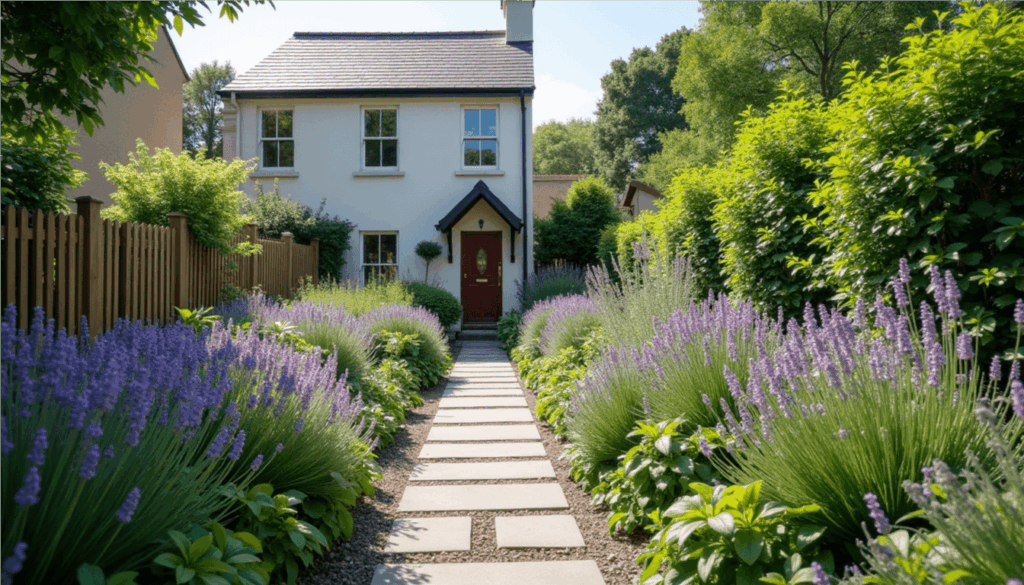
Lavender thrives in these sunnier spots, providing fragrant foliage year-round and purple blooms in summer that attract bees and butterflies. Various Salvias, including Salvia nemorosa ‘Caradonna’, offer months of purple flowers on upright stems and appreciate the good drainage found in south-facing positions.
For architectural impact in sunnier Dublin gardens, ornamental grasses like Stipa tenuissima create movement and catch the light beautifully. Their drought tolerance makes them ideal for areas that receive less rainfall due to buildings or tree canopy.
Summer-Flowering Shrubs With Multiple Seasons of Interest
Including shrubs that flower in summer but offer additional seasons of interest helps maintain year-round appeal in Dublin gardens. These plants provide structure throughout the year while delivering spectacular seasonal highlights.
Hydrangeas perform exceptionally well in Dublin’s climate, with the moist conditions supporting lush growth and abundant flowering. Hydrangea paniculata varieties like ‘Limelight’ produce large conical flowers that start greenish-white in summer and age to pink in autumn, remaining decorative even in winter.
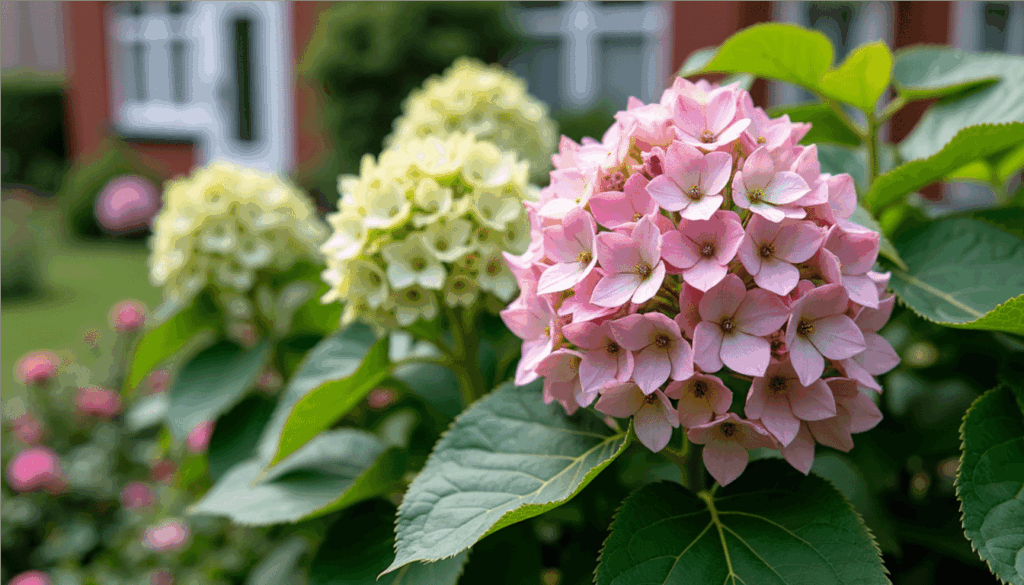
For fragrance and pollinator appeal, Buddleja (butterfly bush) attracts numerous butterflies with its honey-scented flowers in late summer. Compact varieties like ‘Blue Chip’ are perfect for smaller Dublin gardens where space is limited.
Container Plantings for Summer Interest
Container gardening offers flexibility in smaller Dublin spaces and allows for seasonal changes. Summer containers can create focal points of concentrated color and texture, particularly useful in tiny front gardens or on patios. Combine trailing Calibrachoa, upright Salvias, and aromatic herbs like rosemary for containers that deliver multi-sensory appeal throughout the summer months.
Lavender in containers brings Mediterranean charm to Dublin gardens and thrives in the free-draining conditions that pots provide. Group containers of different heights to create visual interest, and consider including at least one evergreen specimen for year-round structure.
Autumn Performers: Late-Season Color for Irish Gardens
Late-Blooming Perennials That Extend the Season
Autumn in Dublin brings shorter days but doesn’t have to mean the end of garden color. Late-blooming perennials offer a final spectacular display before winter, and many perform exceptionally well in Dublin’s mild autumn conditions.
Asters (now reclassified as Symphyotrichum) are autumn garden stars, with varieties like ‘Little Carlow’ producing masses of small daisy-like flowers in shades of purple and blue from September through October. Their late flowering provides essential nectar for pollinators preparing for winter.
Japanese anemones thrive in Dublin’s climate, sending up tall stems topped with pink or white flowers from late August until the first frosts. Their ability to perform in partial shade makes them versatile for many garden situations. For brilliant autumn color in sunny positions, Helenium ‘Moerheim Beauty’ produces coppery-red daisy flowers on tall stems from August into October.
For gardens with damper conditions, which are common in Dublin, these late-season performers add reliable color:
- Persicaria amplexicaulis ‘Firetail’ – with spikes of vibrant red flowers lasting well into autumn
- Rudbeckia fulgida var. sullivantii ‘Goldsturm’ – featuring golden yellow daisy flowers with black centers
- Sedum ‘Autumn Joy’ (now Hylotelephium) – offering flat-topped clusters of pink flowers that mature to rusty red
Ornamental Grasses for Movement and Structure
As autumn progresses, ornamental grasses come into their own in Dublin gardens. Their feathery seedheads and elegant movement in the breeze add interest that persists through winter, especially when backlit by low autumn sunlight.
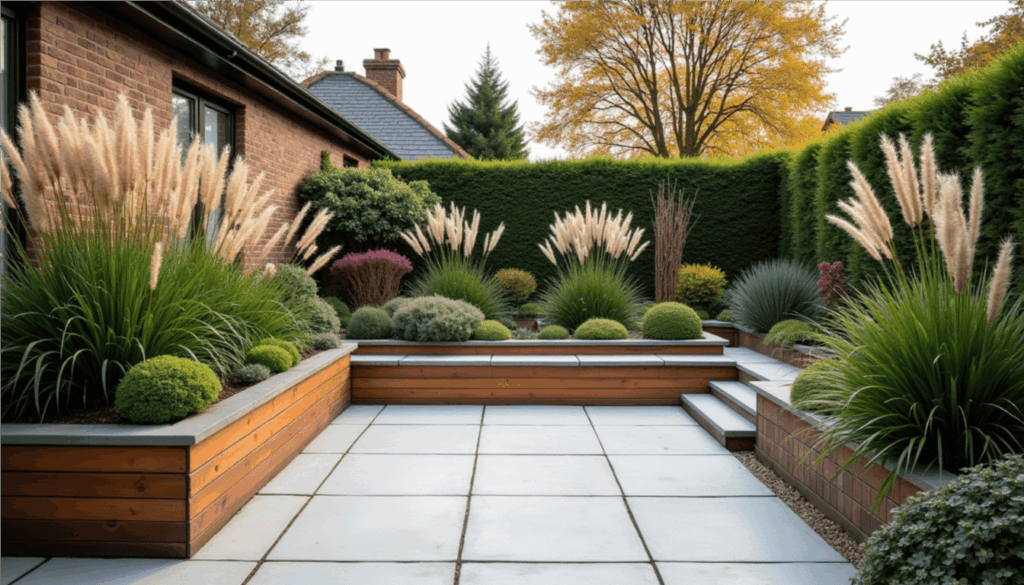
Miscanthus sinensis varieties perform beautifully in Dublin’s climate, with cultivars like ‘Malepartus’ and ‘Morning Light’ offering stunning autumn displays. Their architectural seed heads remain attractive through winter frosts, providing structure when many other plants have died back.
For smaller Dublin gardens, Calamagrostis x acutiflora ‘Karl Foerster’ creates vertical accent with its upright habit. It maintains its form well through autumn rains and winter snow, providing visual interest in even the most challenging conditions.
Winter Interest: Keeping Your Dublin Garden Alive in the Cold Season
1. Winter-Flowering Plants for Reliable Color
Winter needn’t be a dormant period in Dublin gardens. Several plants actually prefer to flower during the cooler months and provide welcome color during the darkest days of the year.
Hellebores (Christmas and Lenten roses) are indispensable for winter interest, producing nodding flowers in shades of white, pink, purple, and even black from January through March. They appreciate the dappled shade found in many Dublin gardens and thrive in the city’s mild winters.
Mahonia x media ‘Charity’ offers architectural foliage year-round, but its moment of glory comes in winter when it produces spikes of fragrant yellow flowers. These are followed by blue-black berries that attract birds. For early color, winter-flowering cherry (Prunus subhirtella ‘Autumnalis’) produces delicate white or pink blossoms intermittently from November to March.
Winter-flowering shrubs that perform well in Dublin include:
- Viburnum x bodnantense ‘Dawn’ – with clusters of pink, highly fragrant flowers from December
- Daphne odora ‘Aureomarginata’ – offering intensely fragrant purple-pink flowers in late winter
- Hamamelis (witch hazel) varieties – featuring spidery yellow or orange flowers from January
2. Evergreen Foliage Plants With Interesting Textures
Beyond flowers, winter interest comes from plants with distinctive foliage, creating textural contrast in the garden. Evergreen ferns like Polystichum setiferum (soft shield fern) maintain lush foliage throughout Dublin’s mild winters, providing a verdant backdrop for winter bloomers.
Heucheras offer a palette of foliage colors from purple to caramel, maintaining their looks through winter and providing ground-level interest. Their resilience in Dublin’s climate makes them valuable additions to winter gardens.
For architectural presence, Fatsia japonica delivers with its large, glossy, hand-shaped leaves that remain impressive year-round. It even produces unusual white flowers in late autumn and early winter, followed by black berries.
3. Container Displays for Winter Interest
Winter containers bring life to entrances and patios during the coldest months. In Dublin’s mild climate, a wider range of plants can survive in containers through winter than in colder regions.
Winter-flowering pansies and violas are classic choices, providing months of colorful blooms with regular deadheading. Underplant them with early spring bulbs like snowdrops and crocus for successive waves of interest.
Combine these flowering plants with structural evergreens like box balls, small conifers, or variegated euonymus to create winter containers with depth and interest. Adding plants with colorful stems, such as dogwoods (Cornus), brings additional visual appeal.
Smart Design Strategies: Creating Cohesive Year-Round Displays
Color Coordination Principles for Continuous Interest
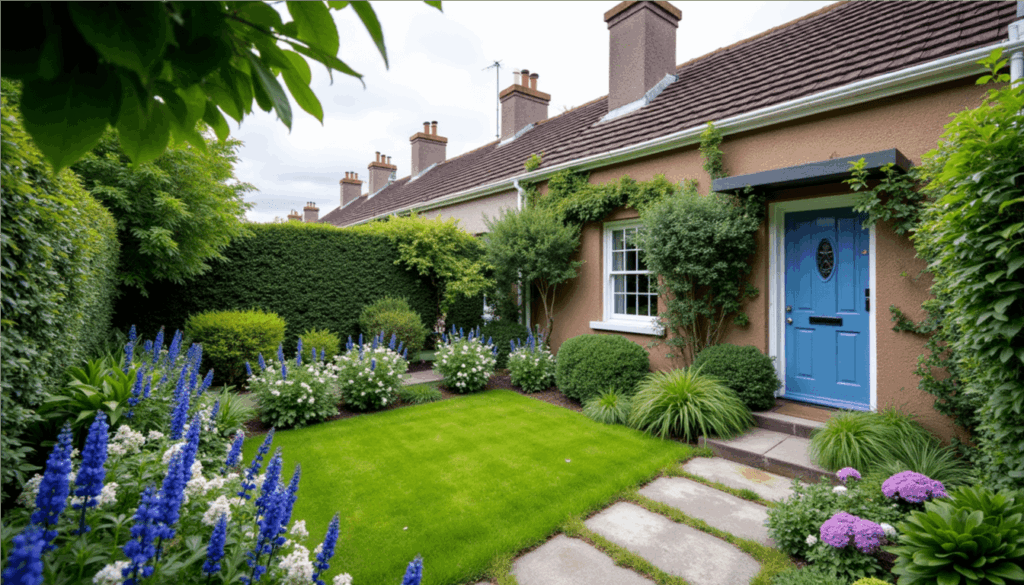
Creating a garden with year-round appeal requires thoughtful color planning. Rather than attempting to include every color in the rainbow, focus on a limited palette that creates harmony and visual impact.
For smaller Dublin gardens, selecting three colors that work well together prevents the ‘dolly mixture effect’ that can make spaces feel chaotic. Blue, purple, and white form a classic combination that works well in Dublin’s soft light, with green providing a restful backdrop.
Consider how colors transition between seasons. Early spring bulbs in white and purple can give way to similar-colored perennials in summer, creating continuity while the actual plants change. Autumn foliage colors can echo earlier flower hues, maintaining the garden’s color theme.
Layering Techniques for Small Dublin Gardens
In compact urban gardens, common throughout Dublin, layering plants maximizes the use of limited space. This technique creates gardens that reveal different plants as the seasons progress.
Start with the tallest layer—trees and large shrubs that provide structure year-round. Beneath these, incorporate mid-height shrubs and perennials that offer seasonal highlights. The lowest layer includes ground covers, bulbs, and early spring ephemeral plants that utilize space while taller plants are dormant.
In a typical small Dublin garden, this might mean:
- Upper layer: A standard bay tree or Photinia ‘Red Robin’
- Middle layer: Hydrangeas, hardy geraniums, and hellebores
- Lower layer: Spring bulbs, Epimedium, and small ferns
Using Repetition to Create Garden Rhythm
Repetition of key plants throughout a garden creates visual rhythm and a sense of cohesion. Rather than having one of everything, select signature plants to repeat at intervals through your borders.
In Dublin gardens, consider repeating structural elements like box balls or clipped bay trees to create a framework. Then echo certain perennials, perhaps Geranium ‘Rozanne’ or Alchemilla mollis, to establish flowing connections between different areas of the garden.
This approach is particularly effective in narrow or small front gardens where visual simplicity prevents overwhelm. Three specimens of the same plant often creates more impact than three different plants, especially in limited spaces.
Put It All Together: A Sample Planting Plan for Dublin’s Climate
Creating a year-round garden in Dublin means combining plants from each season to ensure continuous interest. Here’s a simplified approach for a typical Dublin garden border:
Start with evergreen structural plants placed strategically for year-round presence—perhaps a box ball at each end of a border, with a standard bay tree as a central focal point. These create the garden’s permanent architecture.
Add early spring interest with drifts of bulbs—snowdrops giving way to crocus, narcissi, and finally alliums. As these fade, early perennials like aquilegias and euphorbia take over, followed by summer stars including geraniums and verbena.
Late summer and autumn interest comes from sedum, Japanese anemones, and ornamental grasses, while winter structure relies on the original evergreens, enhanced by hellebores and winter-flowering shrubs.
For professional guidance in creating your own year-round Dublin garden with plants perfectly suited to local conditions, Dublin Landscape Gardener offers expert design and installation services that bring beautiful, season-spanning gardens to life.
Book a Landscape Garden Consultation
A personal creative landscape garden designed to bring your vision to life!

